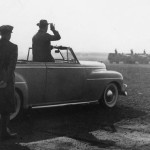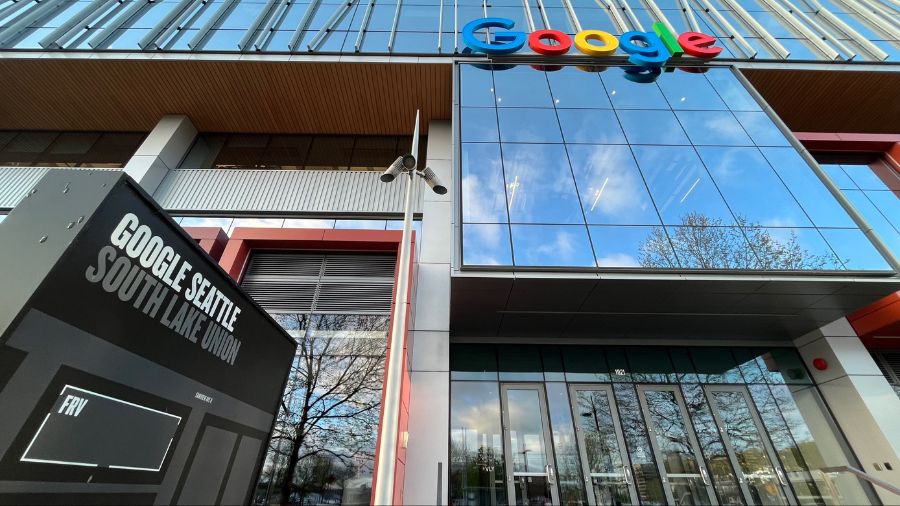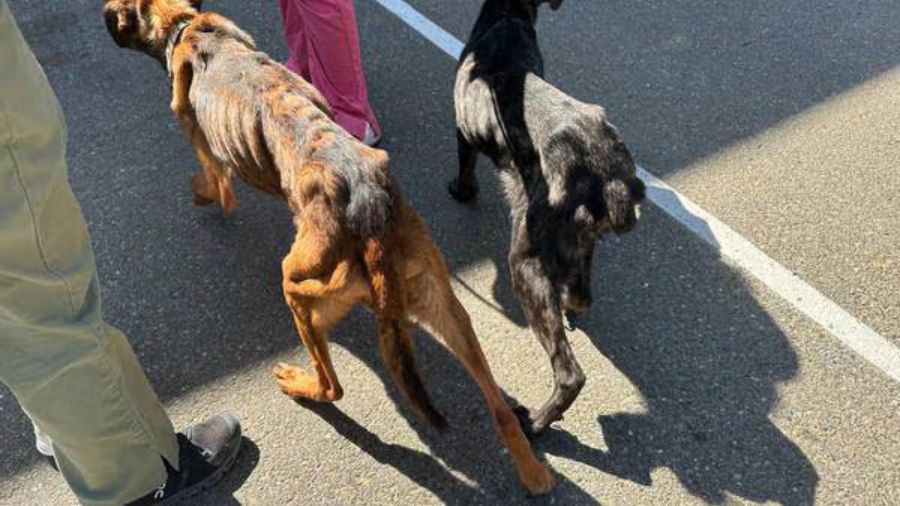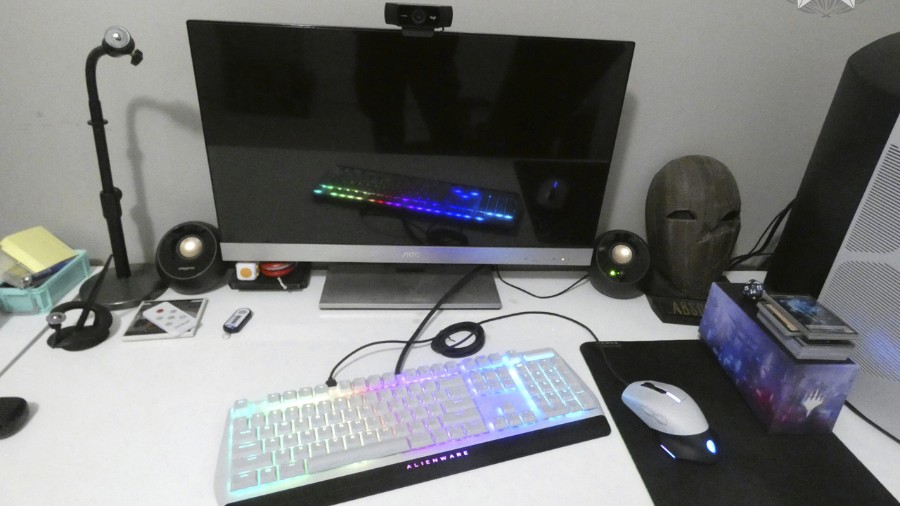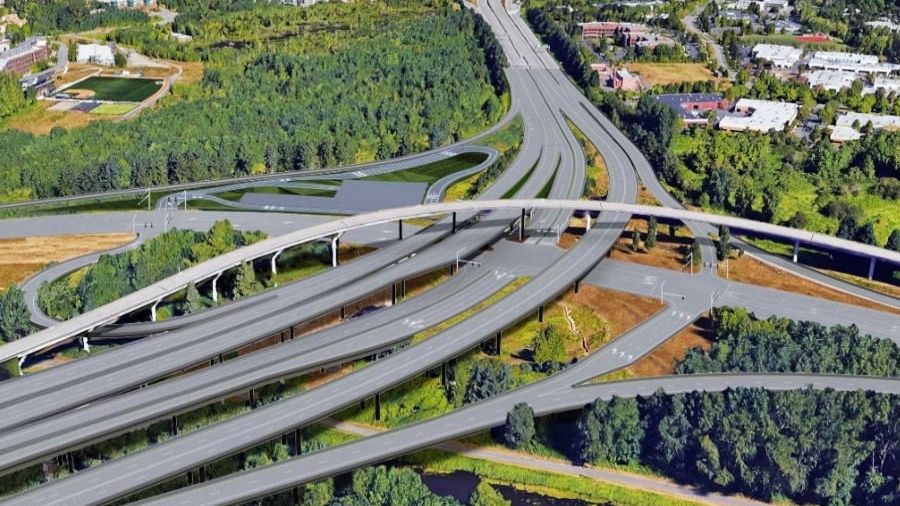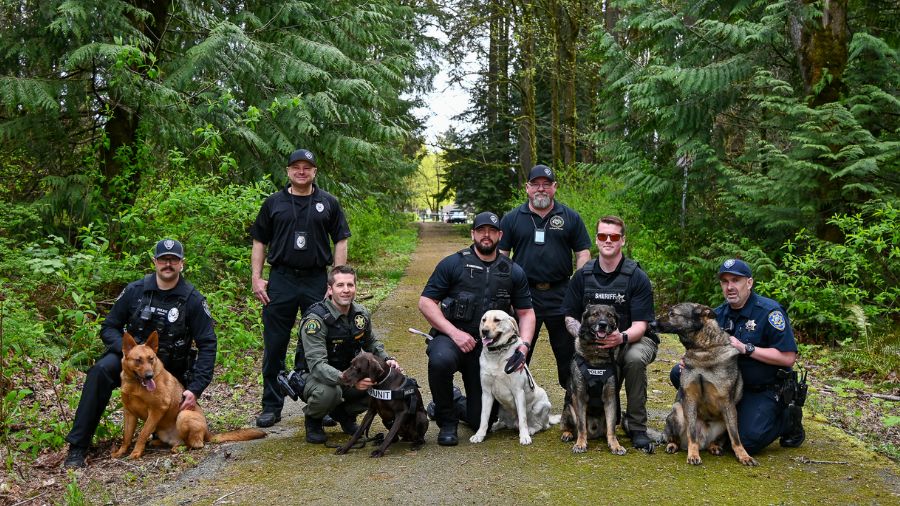President’s secret visit to the Puget Sound region would be impossible today
Sep 28, 2016, 5:32 AM | Updated: Sep 28, 2022, 11:56 am
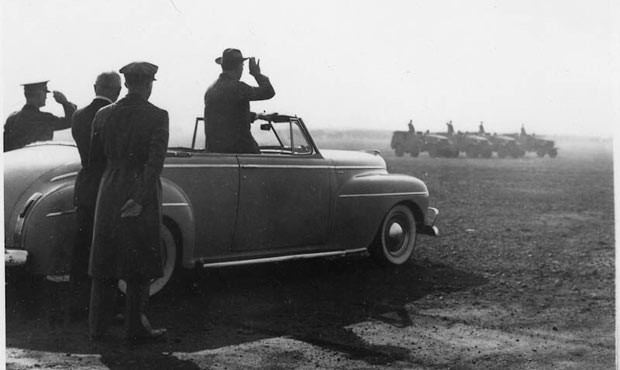
FDR salutes units of the 33rd Infantry Division at Fort Lewis on September 22, 1942. (Courtesy FDR Library and Museum.)
(Courtesy FDR Library and Museum.)
When President Franklin Roosevelt made a wartime visit to Puget Sound Navy Yard in Bremerton in August 1944, the speech he gave there from the deck of a destroyer was broadcast live on all the national radio networks and witnessed in person by an estimated 20,000 people.
“Since my visit here at Bremerton nearly two years ago,” said Roosevelt, in his distinctive drawl, though perhaps sounding a bit reedier than usual, “I have been happy at all times to know of the splendid progress that is being maintained, kept up both here and at many other places on the coast. Progress at turning out ships and planes and munitions of almost every kind, and of the training of men and women for all of the armed services.”
Related: Washington’s forgotten ‘Woodstock of the McCarthy Era’
The 1944 Bremerton speech summarized the war situation in the Pacific and looked ahead to the postwar future. It was also something of a foreshadowing of troubles that lay ahead for the nation’s 32nd president, and a bookend to FDR’s Puget Sound visit just 23 months earlier.
There was no live broadcast when FDR came to Bremerton in September 1942. In fact, the details of his time in Bremerton, Seattle, Fort Lewis, and Vancouver, Washington, and in a total of 24 states during a two-week rail tour, were kept secret from the American public.
It was a scary time. The Japanese attack on Pearl Harbor had happened just nine months earlier, and fear of the enemy in the Pacific Northwest was real, and perhaps justified. A quick survey of newspaper headlines during September 1942 finds front-page stories of American ships being sunk off the West Coast, and even a report that Japanese Premier Tojo had boasted of plans to launch a submarine attack against Tacoma.
FDR’s tour took him to defense plants and military facilities across the country so that he could get a first-hand look at the American homefront. The White House insisted that the media keep the tour secret for safety reasons. This was wartime, so the rationale went, and the Commander in Chief was on legitimate military business, even if it was within the borders of the Lower 48.
A handful of journalists were allowed to come along on FDR’s train and document what they saw. However, the stories they wrote, and the photos and newsreel footage that were shot, weren’t allowed to be published until FDR returned to Washington, DC on October 1.
Betty Winfield is professor emeritus of the University of Missouri School of Journalism, and is author of a book called “FDR and the News Media. Professor Winfield says the fear in September 1942 was real, and that the secrecy, while the trip was in progress, was necessary.
“In retrospect, you think, ‘Oh well, why was that such a big deal?’ But you have to put yourself in the time period and the kind of fears and the kind of concerns about invasion, and about Pearl Harbor, about balloon bombs here, and [camouflaging] the Boeing plant , making it look a city from air, and blackout curtains,” Winfield said.
“There was a real fear about this.”
Nowadays, it’s hard to imagine President Obama “disappearing” for two weeks, or even two days (apart from the occasional surprise visit to the troops overseas at Thanksgiving or Christmas). But somehow, with a cooperative press and special wartime powers for censorship, FDR managed to pull it off in 1942.
When the trip ended with Roosevelt’s return to the White House on October 1, a floodgate opened and “delayed” stories appeared in newspapers around the country. In that day’s paper, The Seattle Times carried a story about FDR’s visit, then nine days old, as reported by famed UPI correspondent A. Merriman Smith.
FDR had arrived in the Northwest by train on Monday, September 21 for a stop at Athol, Idaho and the Farragut Naval Training Station on Lake Pend Oreille. Then, on September 22, the president came to an area that Smith described as “the vital and potentially dangerous Pacific Coast theatre of war operations,” where attack “might come at any time.”
Related: Forgotten folk song joked about collapse of Space Needle
The president’s first stop in Washington was Fort Lewis, where he inspected the 33rd Infantry Division. These troops, Smith wrote, “were finished, hardened soldiers . . . because of the war potential of the Pacific Coast . . . not raw recruits, but men ready and trained for combat.”
Next, Roosevelt traveled by DeSoto convertible through south Tacoma and then across the Narrows by ferry; the bridge had collapsed in November 1940 and wouldn’t be replaced until after the war.
At Bremerton, Roosevelt toured the shipyard, where dozens of Navy vessels, including many of those damaged at Pearl Harbor, had been repaired. Roosevelt also met several recuperating sailors, shaking hands with each as they walked or were wheeled past where the president, who had only limited use of his legs, sat in his open car. Images of these moments were seen widely in wire photos and newsreels in early October 1942.
“I have seen wounded ships and wounded men,” Roosevelt said, “and we are bringing them back and making them new.”
As part of his visit, FDR addressed a gathering of thousands of shipyard workers. He noted that the old golf course that he’d played there during World War I had been replaced with machine shops. FDR had made his previous visits to Bremerton in his capacity as Assistant Secretary of the Navy.
In his remarks, the president also made light of the fact that the “secret” tour wasn’t really so secret to the thousands of workers he addressed.
“I’m not really here because I am taking this trip under Navy orders,” Roosevelt joked, “and that means that my cruise is not published in the papers. So, just remember that for about ten days, you haven’t seen me.”
From Bremerton, FDR traveled by ferryboat across Puget Sound to Seattle. He then went to Boeing Plant 2, the camouflaged home of the company’s B-17 Flying Fortress production line.
At Boeing, the president was driven through the factory in the same DeSoto convertible on a 30-minute tour, skimming beneath the wings of the legendary four-engine bombers and reportedly surprising countless Boeing workers who’d had no forewarning of the visit. Smith wrote that one Boeing employee said, “Holy cats! The President of the United States was right by my table. Holy cats!”
It wasn’t reported in the paper (even after the October 1 embargo), but photos in the archives at the FDR Library appear to show that when the Boeing visit was over, Roosevelt spent time at the Mercer Island home of his daughter, Anna Boettiger and her then-husband John, who was publisher of the Seattle Post-Intelligencer.
Later that night or perhaps early the next morning, FDR boarded his special train and continued south toward Vancouver, Washington. The next day, he visited the Kaiser Shipyards there and the Oregon Shipbuilding Corporation in Portland, before continuing south to Oakland, and then to southern California before heading east and back to the White House.
Ten days after returning to Washington, DC, FDR gave a Fireside Chat. He spent several minutes talking about what he’d seen on his tour, and, in some ways, justifying the effort and resources, and the secrecy, that the tour had required.
There are now millions of Americans in army camps, in naval stations, factories, and shipyard. Who are these millions upon whom the life of our country depends? What are they thinking? What are their doubts? What are their hopes? And how is the work progressing?
The Commander-in-Chief cannot learn all of the answers to these questions in Washington. And that is why I made the trip I did. It is very easy to say, as some have said, that when the President travels through the country he should go with a blare of trumpets, with crowds on the sidewalks, with batteries of reporters and photographers, talking and posing with all of the politicians of the land.”
But having had some experience in this war and in the last war, I can tell you very simply that the kind of trip I took permitted me to concentrate on the work I had to do without expending time, meeting all the demands of publicity. And, I might add, it was a particular pleasure to make a tour of the country without having to give a single thought to politics. I expect to make other trips for similar purposes, and I shall make them in the same way.
In the last war, I had seen great factories; but until I saw some of the new present-day plants, I had not thoroughly visualized our American war effort. Of course, I saw only a small portion of all our plants, but that portion was a good cross-section, and it was deeply impressive.
FDR scholars Russell D. Buhite and David W. Levy say that in the October 12 broadcast, “the president bobbed and weaved expertly, as he often did in giving a speech.”
“If this Fireside Chat accurately reflected his emotions,” Buhite and Levy continued, “the journey across America left Roosevelt in high spirits and with an optimistic appraisal of his fellow citizens. The speech was rambling and unfocused, but filled with praise for the men and women of the nation.”
When FDR visited Bremerton again in 1944, the war effort had seen much progress on both fronts and the need for domestic secrecy had diminished. The Allies had landed at Normandy in Nazi-occupied France and were making gains against Japan in the Pacific. The end of the conflict was almost in sight. As it turned out, the end of FDR was almost in sight, too.
The president had returned to Bremerton in August 1944 following a three-week voyage to Hawaii and then, in secret, to Alaska. The remarks he gave in Bremerton amounted to his first broadcast since accepting the Democratic nomination to seek an unprecedented and controversial fourth term as president.
Earlier that year, aides and family members had noticed that Roosevelt’s health appeared to be in decline. They had hoped that he would return from his Pacific voyage recuperated and refreshed, but the trip only took a further toll. FDR’s physician Howard Bruenn, who accompanied him on the trip, believed that FDR actually suffered a mild heart attack—angina pectoris—just moments before he made the broadcast from Bremerton. In grainy photos taken during the speech, the president looks gaunt and even weak, standing in the shadow of the destroyer’s powerful deck guns.
While Time Magazine called the Bremerton speech “rambling and folksy,” FDR speechwriter Samuel Rosenman considered it a “dismal failure.”
FDR would go on to win a fourth term that November, defeating Governor Thomas Dewey of New York, but his health continued to deteriorate. President Roosevelt died of a cerebral hemorrhage on April 12, 1945, less than three months after the inauguration, and just four months before World War II came to an end.


